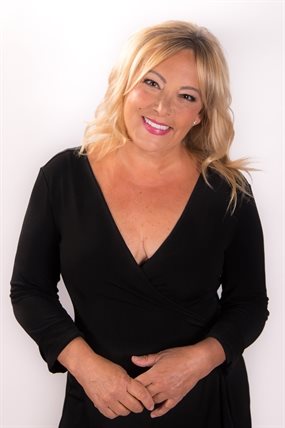Destination shopping districts changing face of retail in Kelowna and beyond
After two years of shopping online, and only rushing out to buy essentials, Kelowna is going to see its retail sector explode.
Not only are people emerging from COVID with a pent-up desire to make shopping a fun leisure activity again but the city has been discovered by the world. It’s no longer considered a secondary market in Canada but has moved up to be a primary destination for businesses as well as travellers, Terese Cairns, a real estate advisor with FaithWilson/Christie’s International Real Estate, told iNFOnews.ca.
“People want to live here, for so many reasons,” she said. “They’re coming from all over the world now. They’re not just coming from Vancouver or Alberta. They’ve coming from all across the country. They’re coming from Europe - we’ve got so many people coming from Europe. I think the Ukraine situation is pressing on the European market to look for other options of other places to live. We have a number of German investors coming to the market.”
READ MORE: Kelowna enters a new price bracket for 'luxury' homes
Supply chain disruptions caused by shutdowns of major Chinese cities because of a re-emergence of COVID and the war in Ukraine that’s causing disruptions throughout Europe, are further reasons why Canadians want to go back to making shopping a fun social activity, she said.
Kelowna was the fastest growing major metropolitan area in the country during the last census period. With that population growth comes the emergence of more neighbourhood destination shopping/dining areas.
“We see that in all big cites,” Cairns said. “Vancouver has Lonsdale Quay, Granville Island, Kerrisdale. It’s something we’ve been lacking. All we had was Bernard Avenue and we haven’t had any options.”
She sees the Aqua development on lands next to Boyce Gyro Park as becoming Kelowna’s Granville Island.
The future development of the Tolko Industries lands in the North End of downtown will likely develop a similar vibe.
Even the old Costco site at the corner of Highways 97 and 33 holds that potential.
“I wouldn’t be surprised to see a mixed use development there, with a rezone from the city,” Cairns said. “It’s big enough that you could have a little bit of a village stroll at grade and have residential above.”
The future of retail in the city is most likely to be generated locally, she said, noting that shoppers don’t need to go to big box stores so much anymore because a lot of those products can be purchased online.
READ MORE: Huge jump in help wanted ads in Central Okanagan
“The market in Kelowna is more the small retailers,” Cairns said. “We’ve got a lot of the mom and pop retailers that give the city part of its charm – because of the agri-tourism sector, the wineries, the lavender farms. It gives the city an air of locality that is very interesting to tourists and to the local market as well. Local retailers have a very good chance of doing good business here.”
West Kelowna is also heading towards major changes with a downtown revitalization plan that shifts the retail focus from Main Street to Brown Road.
“They want to create a downtown core which will be a vibrant area where people can congregate, eat and drink and shop and enjoy themselves,” Cairns said. “That’s really lacking in West Kelowna.”
She also pointed out that people don’t realize that West Kelowna is a wealthy community with lots of potential.
“There’s a lot of demand in West Kelowna for a higher-end food store, for example,” Cairns said. “There is very little in terms of grocery options that are interesting. That would be something that would be a really nice addition on the retail side for this market.”
The dramatic growth in the region means there needs to be a deeper look at getting people around, such as planning for a second crossing of Okanagan Lake, given that much of the region is still very vehicle dependant.
“Out of most cities in Canada, or at least definitely in B.C., Kelowna is the most American-style in terms of retail,” Cairns said. “American meaning a lot of highway retail. So you need your car. The more we densify and build smaller shopping areas in concentric regions, the more people will walk and bike and use transit.”
Changes will also reach further afield.
“Vernon is going to be a suburb to Kelowna, very soon, sort of as Burnaby is to Vancouver,” Cairns said. “Right now, there are still some bargains to be had in Vernon. It’s a bit of a sleeper and the demographic is a little bit different than Kelowna.”
She sees growth in both cities moving towards each other.
Rutland, too, will develop its own unique character, given its proximity to UBC Okanagan.
“What I think we’re going to see in Rutland is an emergence of a younger population base than is currently there,” Cairns said. “A lot of the developers are buying land assemblies there to build housing for university students and people who are attending the university as professors. I think we’re going to see a gentrification of Rutland that is going to change over time. It will become a younger more vibrant community than it is today.”
That, too, will draw its own demand for dining, retail and others services.
Penticton, on the other hand, is far enough away to not reach that suburb status, Cairns said.
The region is likely going to be somewhat insulated from the higher interest rates and global factors that may trigger slowdowns in other areas, Cairns predicted.
“I think Kelowna is going to keep growing,” she said. “I don’t see it slowing down here any time soon.”
To contact a reporter for this story, email Rob Munro or call 250-808-0143 or email the editor. You can also submit photos, videos or news tips to the newsroom and be entered to win a monthly prize draw.
We welcome your comments and opinions on our stories but play nice. We won't censor or delete comments unless they contain off-topic statements or links, unnecessary vulgarity, false facts, spam or obviously fake profiles. If you have any concerns about what you see in comments, email the editor in the link above.





